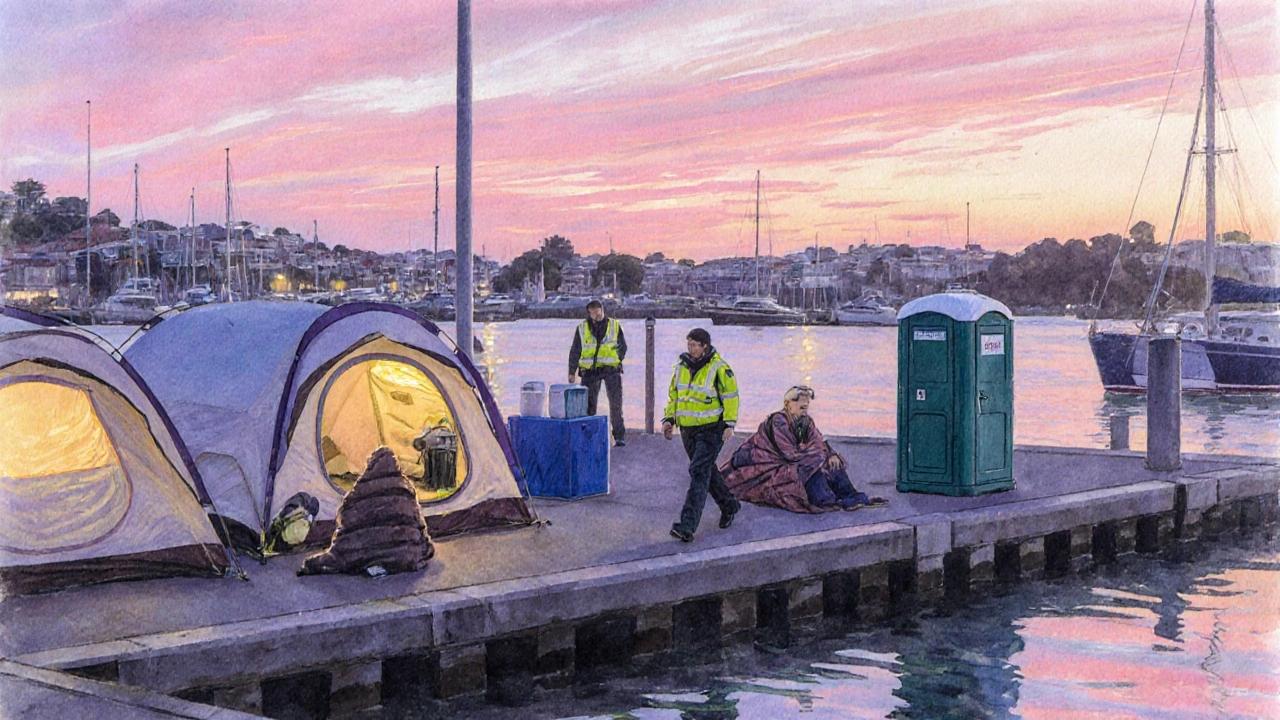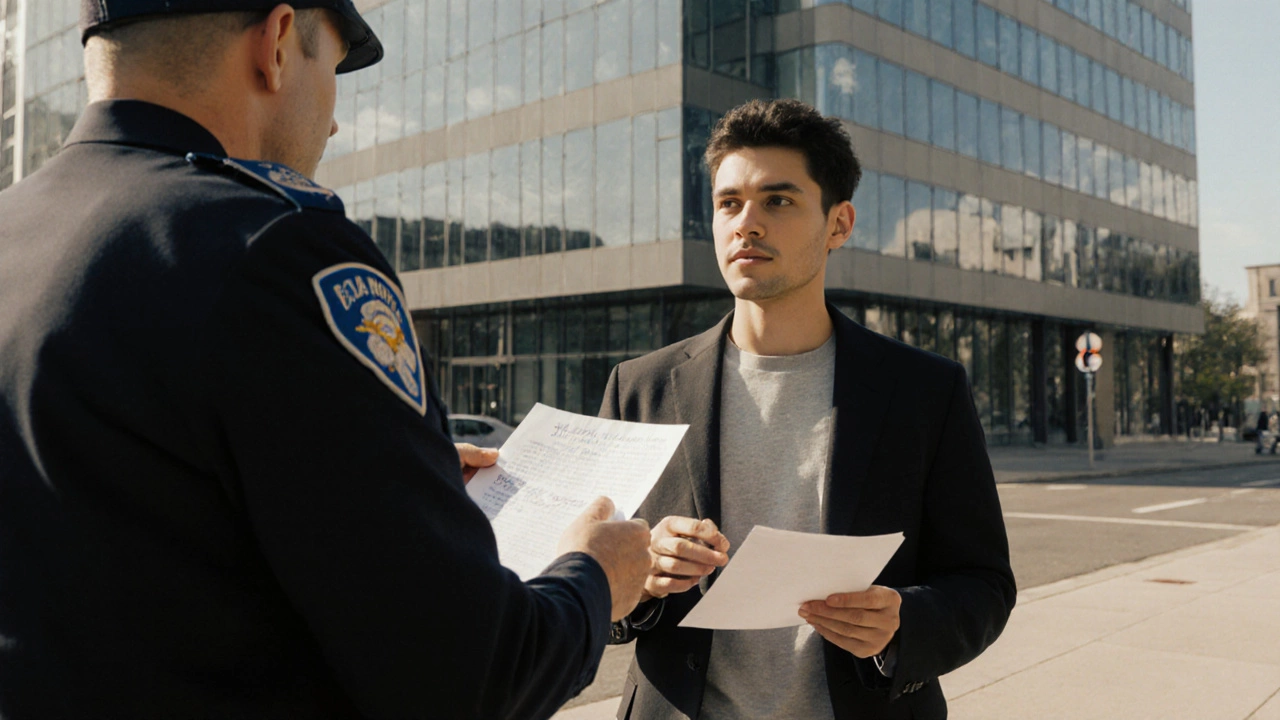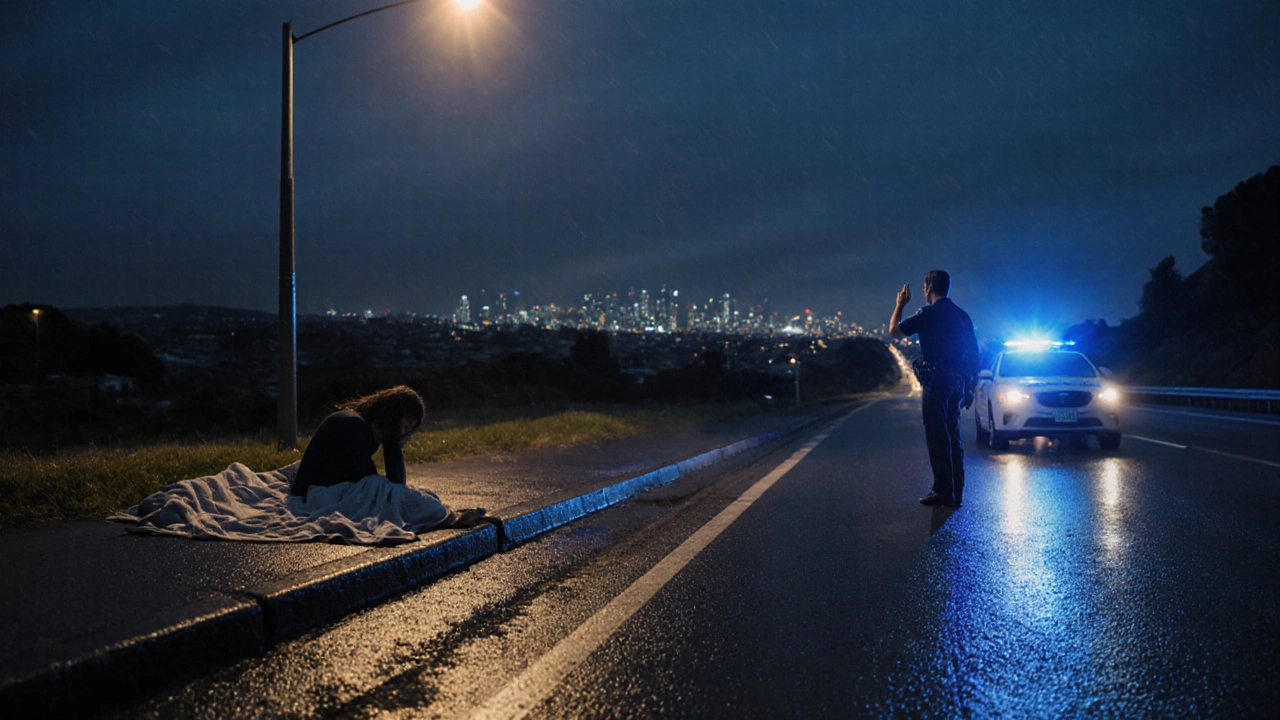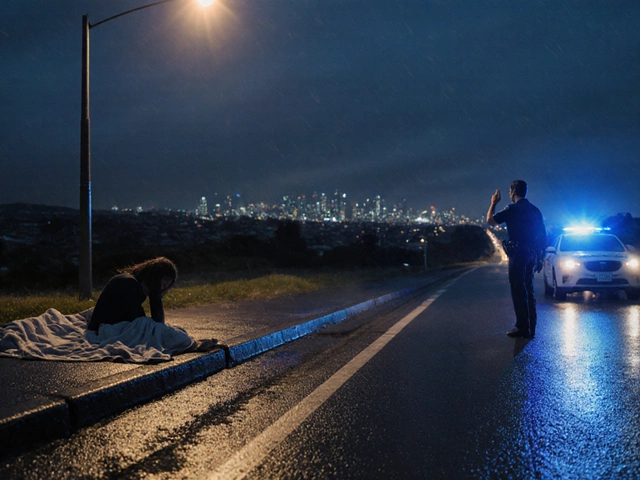Roadside Sleeping Legal Guide
Results will appear here after checking
When you’re out on the streets and wonder whether you can sleep on the side of the road, the answer isn’t as simple as a yes or no. The legality depends on national statutes, local bylaws, and how police interpret public safety. This guide breaks down New Zealand’s public‑sleeping framework, looks at Wellington’s specific rules, and gives practical steps to protect your rights while staying safe.
What is "public sleeping"?
Public sleeping law in New Zealand is a set of statutes and local regulations that govern when and where a person may rest in areas that are not privately owned. In everyday language, it covers any situation where someone lies down on a sidewalk, park bench, or the shoulder of a road. The law isn’t aimed at punishing homelessness; it’s about balancing public safety, health, and the rights of all citizens.
National framework: rights and restrictions
At the national level, two pieces of legislation matter most:
- New Zealand Bill of Rights Act 1990 - guarantees freedom of movement and protection from arbitrary interference.
- Criminal Procedure Act 2011 - gives police powers to remove a person from a public place if there is an immediate risk to health or safety.
These laws mean you cannot be forcibly removed just because you’re sleeping, unless a genuine safety concern is present (e.g., blocking traffic, creating a fire hazard, or posing a health risk).
Local bylaws: the Wellington example
Each council can add rules that fit local conditions. Wellington City Council, for instance, has a bylaw titled “Public Places Use Order”. The key points are:
- Sleeping on a highway shoulder is prohibited if it endangers motorists.
- Sidewalks and parks are considered public spaces; sleeping is allowed unless it creates a nuisance or health hazard.
- Police may issue a directions notice to move if a disturbance is reported.
Other cities like Auckland and Christchurch have similar clauses, but the enforcement tone varies. Auckland tends to be stricter about highway shoulders, while Christchurch offers designated “safe sleeping zones” during winter.
When can police intervene?
Police powers are often misunderstood. Under the Criminal Procedure Act, officers can:
- Ask you to move if you’re blocking a road or creating a safety issue.
- Detain you briefly to assess health risks (e.g., intoxication, severe weather exposure).
- Refer you to a shelter if one is available nearby.
These actions must be proportionate. If an officer simply wants you to move because you’re on a quiet residential street with no traffic impact, you can politely ask for the specific reason and request a written notice.
Safe sleeping zones and shelter alternatives
Many councils run “safe sleeping zones” that are legally sanctioned spots where you can rest without fear of removal. Wellington’s current zones include:
| Location | Facilities | Hours |
|---|---|---|
| Petone Wharf | Portable toilets, heated tents | 24 hours |
| Mount Victoria Reserve | Water stations, security patrols | Night only (6 pm‑8 am) |
| Lambton Quay side street | None (monitoring only) | Night only |
These zones are set up under the Housing First approach, which prioritises stable housing before addressing other issues. If a safe zone isn’t practical for you, the council’s homeless shelters provide emergency beds, meals, and case management.

How to protect your rights if you’re sleeping on the roadside
- Know the local bylaw. A quick visit to the city council website will show any specific restrictions.
- Carry identification. Having a driver’s licence or ID helps police confirm who you are and can reduce misunderstandings.
- Stay visible but safe. Choose well‑lit spots away from traffic flow; this lowers the chance of being deemed a hazard.
- Document interactions. If a police officer asks you to move, ask for their badge number and write down the time and location.
- Know your right to ask for a written notice. Officers must provide a written direction if they intend to enforce removal.
- Use shelter services. Even if you prefer roadside sleeping, knowing the nearest shelter can be a backup if conditions worsen.
These steps don’t guarantee you’ll never be asked to move, but they give you a clear record and demonstrate that you’re aware of your legal standing.
Common myths about roadside sleeping
- Myth: It’s always illegal to sleep on any public land.
Reality: Most public spaces permit sleeping unless there’s a specific safety or health concern. - Myth: Police can arrest you for sleeping.
- Reality: Arrest is only possible if you’re breaking other laws (e.g., drug possession, violent behaviour). Sleeping itself isn’t a criminal offence.
- Myth: Shelters will always have a bed for you.
- Reality: Capacity fluctuates; safe sleeping zones are a legal fallback.
What to do if you’re asked to move
Stay calm and follow these steps:
- Ask politely why you’re being asked to move.
- If the reason is “nuisance” or “health risk,” request a specific description (e.g., “blocking the curb”).
- Offer to relocate to the nearest safe sleeping zone or shelter.
- If you believe the request is unlawful, ask for a written notice and note the officer’s details.
- Contact a local advocacy group (e.g., Citizens Advice Bureau) for support.
Resources and contacts (2025)
- Wellington City Council - Public Places Use Order: website URL omitted per instructions
- Police - Community Safety Unit: 0800 123 456 (available 24 h)
- Homeless Shelters Directory - Wellington: website URL omitted
- Housing First NZ - national program overview: website URL omitted
- Citizens Advice Bureau - legal assistance for public‑sleeping queries.

Is it illegal to sleep on a highway shoulder?
Yes, if the shoulder is part of a public road and your presence creates a safety risk for motorists. Police can ask you to move immediately under the Criminal Procedure Act.
Can I refuse to leave a public park where I’m sleeping?
You can stay as long as you’re not causing a health hazard or a breach of local bylaws. If a council officer issues a written direction, you must comply or appeal the notice.
Do I need permission from the council to sleep on the roadside?
No formal permission is required, but you must respect any specific local restrictions (e.g., no sleeping on certain streets after midnight).
What should I do if I’m harassed while sleeping on the street?
Record the incident if safe, note the time and location, and report it to the police. You can also contact local advocacy groups for legal support.
Are there any free legal services for people sleeping on public land?
Yes. The Citizens Advice Bureau and several university law clinics offer free consultations on public‑sleeping rights.


